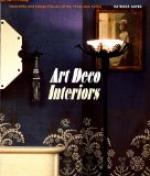Etchings are at their best with other etchings, engravings or water colours, and should be hung in rooms flooded with light and delicately furnished.
The crowding of walls with pictures is always bad; hang only as many as furnish the walls, and have these on a line with the eye and when the pictures vary but slightly in size make a point of having either the tops of the frames or the bottoms on the same line,—that is, an equal distance from floor or ceiling. If this rule is observed a sense of order and restfulness is communicated to the observer.
If one picture is hung over the other uniformity and balance must be preserved.
One large picture may be balanced by two smaller ones.
Hang your miniatures in a straight line across your wall, under a large picture or in a straight line—one under the other, down a narrow wall panel.
CHAPTER VIII
TREATMENT OF PIANO CASES
A professional pianist invariably prefers the case of his or her piano left in its simple ebony or mahogany, and would not approve of its being relegated to the furniture department and decorated accordingly, any more than your violinist, or harpist, would hand over his violin, or harp, for decoration.
When a piano, however, is not the centre of interest in a house, and the artistic ensemble of decorative line and colour is, the piano case is often ordered at the piano factory to be made to accord in line with the period of the room for which it is intended, after which it is decorated so as to harmonise with the colours in the room. This can be done through the piano factory; but in the case of redecorating a room, one can easily get some independent artist to do this work, a man who has made a study of the decorations on old spinets in palaces, private mansions and museums. Some artists have been very successful in converting what was an inartistic piece of furniture as to size, outline and colour, into an object which became a pleasing portion of the colour scheme because in proper relation to the whole.
You can always make an ebony or mahogany piano case more in harmony with its setting by covering it, when not in use, with a piece of beautiful old brocade, or a modern reproduction.
PLATE XIII
Another side of same Italian Louis XVI salon. The tea-table is a modern painted convenience, the two vases are Italian pharmacy jars and the standard for electric lights is a modern-painted piece.
[Illustration: Another Side of Same Italian Louis XVI Salon]
CHAPTER IX
TREATMENT OF DINING-ROOM BUFFETS AND DRESSING-TABLES
A dining-room buffet requires the same dignity of treatment demanded by a mantelpiece whether the silver articles kept on it be of great or small intrinsic value. Here, as in every case, appropriateness dictates the variety of articles, and the observance of the rule that there shall be no crowding nor disorder in the placing of articles insures that they contribute decorative value; in a word, the size of your buffet limits the amount of silver, glass, etc., to be placed upon it.




